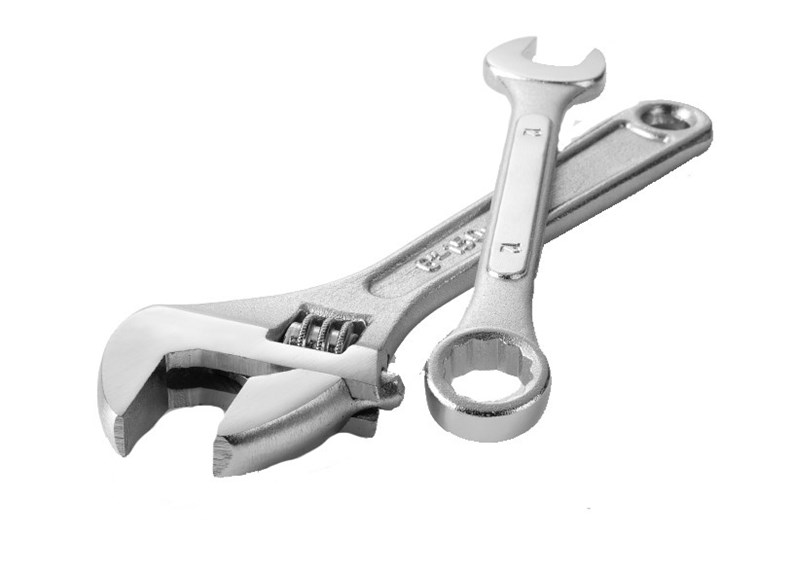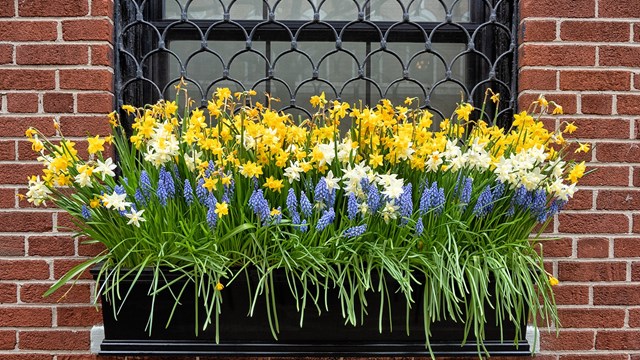While the work of an association manager or superintendent is never truly done, there are certain times of the year that require specific attention to various details—and that often means more work. Winterizing a building and its surroundings, for example, takes a lot of time, effort and preparation that simply can't wait until the last minute. When summertime nears, there are items on the maintenance "to-do" list that weren't there three months ago, like landscaping and pool detail. With a comprehensive checklist and a little help from a few experts, you can ensure that your building or HOA is ready for any season and always ahead of schedule.
Fall Into Winter
The fall season is one of the two busiest times of year when it comes to maintenance needs. In order to prepare for the winter season, much of the building and grounds must be surveyed for possible hazards. Scott Dalley is the senior vice president of Access Property Management in Flemington, and says that fall is a time for cleaning up what Mother Nature casts off.
"Branches and leaves are big enemies in the winter because they can cause ice damming. So as the leaves fall, we get in the gutters and remove debris."
Dalley also notes that the fall is the time to clean and winterize pipes—anything having to do with water should be looked at, including buttoning up any swimming pools on the grounds.
Both Dalley and Arthur Guzzi, manager of the Society Hill Condos in Cherry Hill agree that maybe the most important job in the autumn season is finalizing plans for snowfall. Guzzi says he plans for snow even earlier than September.
"I get ready for winter in June," he says with a chuckle. "Our HOA got hammered with snow removal costs in the last few years, so I've looked for ways to save money."
Guzzi says he realized that the way his housing association was dealing with snow removal was costing way too much—they were hiring an outside contractor who, with all the supervisor fees and charges was costing the HOA thousands of unnecessary dollars. "Now, I hire bodies in June for snow removal, work out the contracts and then our own in house staff supervises," he says. Guzzi estimates the HOA has saved over $50,000 so far in snow removal savings by thinking ahead, planning and re-examining the process that was already in place.
Dalley adds that yes, "snow removal looms large" in the fall, and that a smart manager will make sure all his or her contracts are in line long before the first winter storm. "You should have cell phone numbers for all your snow removal contractors," says Dalley. "And communication with residents is key—the more residents know about plow routes, parking and where to get snow updates, the less chance there is for slips, falls or blocked-in cars."
Guzzi says fall is also a time to look at the trees—but not just to watch the leaves change color. "Trees are like human beings," he says, and feels that sometimes a little guidance is necessary. "You can't put them on a diet, but you can prune them and trim their branches so they don't break under heavy snow." As for landscaping, Dalley suggests that when the property's plants go dormant, some decorative kale or similar cooler weather plants can be utilized to make the common areas look pleasant.
Winter is No Time for Hibernation
If your building's snow removal system is watertight, winter storms will certainly be easier to navigate. But even though wintertime in New Jersey isn't really the time to undertake large projects like roof repair, still requires special maintenance attentions.
Peter Grech is the president of New York's Superintendent's Technical Association (STA) and puts several items on his winter maintenance checklist for both HOAs and self-contained condo buildings, including checking the floats and alarms for the roof tank (in the case of high-rises) and monitoring all the building's main drains.
Mostly, a manager's job in the winter, however, is, in Guzzi's words, "to watch the weather closely." He advises monitoring not just local weather, but national weather, as well. "They can't always pinpoint what kind of precipitation the area will get—you could get rain, freezing rain, ice storms or snow, and that affects the snow removal process," says Guzzi. "We try to delay snow removal just long enough to make it efficient as possible."
As the season draws to a close and spring (finally) hints at its arrival, Dalley says it's time for more clean up. "When spring is around the corner, you should look for damage," he says. "Look for damage to roadways from snow removal, as well as areas where snow was stockpiled - there may be damage to the turf done by salt and chemicals. Also check flora and fauna for breakage, and decide on pruning or removals." Dalley says that the thaw reveals the effect the winter had on the building itself, once the ice melts. "Look for any damage to shingles caused by ice damming, for example. You want to take in the appearance of the community on the whole after the winter passes," he says. "It's a restorative and recuperative time."
Spring Into Action
And as for repairs, start firing your engines. What couldn't be done in the winter becomes top priority as the warmer weather approaches. "Every one of our 375 unit holders realize that there's often just not much we can do about certain complaints or work orders in the winter," says Guzzi. But all three pros agree that as soon as the job can be done, you need to do it—and that usually happens in the first few months of spring.
As the world wakes up from its winter nap, the work of your association's building maintenance team picks up tremendously. Perhaps the busiest season of them all, spring requires managers to catch up from the winter and prepare for a busy summer, too. Grech lists over 25 tasks on his personal maintenance checklist that need attention in spring, "Including cleaning boiler tubes, flushing domestic hot water coils, cleaning cooling towers, checking cap-stone joints for separations or cracks and using binoculars to check window lintels, expansion joints and all brickwork in general."
On top of that, Guzzi notes that it's planting time, as well. Landscape needs for the summer are finalized and arborists or landscape companies contracts should be drawn up at this time.
Spring is also the time to finalize plans and contracts for large projects that will be executed in the summertime.
Summer—Season of the Project
"In New Jersey especially, summertime is the time of year for projects that require good weather in order to be completed," says Dalley. "We do as much as we can during the warm months, like paving, concrete and asphalt repair, roofing, painting, windows and fences and any major 'reserve' item on the list." Guzzi and Grech both agree, and Guzzi says "The five-year plans get bites taken out of them in the summer." Grech says that a good time to check and make necessary repairs to a building's heating system is in the summertime—when the system isn't being used. Grech recommends having the burner overhauled each summer and advises cleaning the cleaning the oil tank every five years as well.
Pool maintenance is clearly a big job in the summer, and Dalley cautions that in New Jersey, a certified pool operator must manage each condo or HOA pool. Necessary permits must be in place before the pool can be opened and enjoyed.
A Job for All Seasons
Dividing up maintenance by season is part necessity, part convenience—it's nice that Mother Nature helps space some of the work out for the busy manager. But Guzzi notes that "you have to be careful—while you're doing preparation for the next season, you still have to be taking care of all the regular maintenance, too."
Dalley says that a good management company will do its best to insure attention to detail by doing frequent walk-through of all its properties. "We've got full time on-site managers as well as portfolio managers who do inspections constantly and look with an eye toward maintenance and 'risk analysis,'" he says. When a branch is hanging low over a walkway or there are potential sidewalk problems, good managing agents can take proactive steps before, say, snow causes the branch to break or ice causes cracks in the sidewalk to expand and cause sidewalk heaving.
By following a checklist, you can ensure perfect harmony with the changing seasons each year—or, at the very least, never complain that you have nothing to do.
Mary Fons is a freelance writer and a frequent contributor to The New Jersey Cooperator.







Leave a Comment